Nissan NV200 2014 User Manual

→
2014 NV200 COMPACT CARGO
OWNER’S MANUAL
For your safety, read carefully and keep in this vehicle.

FOREWORD |
READ FIRST—THEN DRIVE SAFELY |
Welcome to the growing family of new NISSAN owners. This vehicle is delivered to you with confidence. It was produced using the latest techniques and strict quality control.
This manual was prepared to help you understand the operation and maintenance of your vehicle so that you may enjoy many miles (kilometers) of driving pleasure. Please read through this manual before operating your vehicle.
A separate Warranty Information Booklet explains details about the warranties covering your vehicle. The “NISSAN Service and Maintenance Guide” explains details about maintaining and servicing your vehicle. Additionally, a separate Customer Care/Lemon Law Booklet (U.S. only) will explain how to resolve any concerns you may have with your vehicle, as well as clarify your rights under your state’s lemon law.
Your NISSAN dealership knows your vehicle best. When you require any service or have any questions, they will be glad to assist you with the extensive resources available to them.
In addition to factory-installed options, your vehicle may also be equipped with additional accessories installed by NISSAN or by your NISSAN dealer prior to delivery. It is important that you familiarize yourself with all disclosures,
warnings, cautions and instructions concerning proper use of such accessories prior to operating the vehicle and/or accessory. See a NISSAN dealer for details concerning the particular accessories with which your vehicle is equipped.
Before driving your vehicle, please read this Owner’s Manual carefully. This will ensure familiarity with controls and maintenance requirements, assisting you in the safe operation of your vehicle.
WARNING
IMPORTANT SAFETY INFORMATION REMINDERS FOR SAFETY!
Follow these important driving rules to help ensure a safe and comfortable trip for you and your passengers!
●NEVER drive under the influence of alcohol or drugs.
●ALWAYS observe posted speed limits and never drive too fast for conditions.
●ALWAYS give your full attention to driving and avoid using vehicle features or taking other actions that could distract you.
●ALWAYS use your seat belts and appropriate child restraint systems.
●ALWAYS provide information about the proper use of vehicle safety features to all occupants of the vehicle.
●ALWAYS review this Owner’s Manual for important safety information.

DRIVING
This vehicle will handle and maneuver differently from an ordinary passenger vehicle because it has a higher center of gravity. As with other vehicles with features of this type, failure to operate this vehicle correctly may result in loss of control or an accident.
Be sure to read “Driving precautions,” “Avoiding collision and rollover” and “Driving safety precautions” in the “Starting and driving” section of this manual.
MODIFICATION OF YOUR VEHICLE
WARNING
Any modifications or alterations of this vehicle that do not comply with the NISSAN NV200 Compact Cargo Body Builder’s Guide may affect the safety of the vehicle which may result in a collision, serious personal injury or death. A electronic copy of the NISSAN NV200 Compact Cargo Body Builder’s Guide is available at www.nissancommercialvehicles.com.
Modifications made to this vehicle by conversion companies or dealers may affect the final certification of the engine, vehicle or equipment. The conversion company or dealer has the responsibility to certify that the altered vehicle and equipment complies or continues to comply with all applicable motor vehicle safety standards and emissions regulations. The conversion company or dealer is responsible for making sure the modifications or installed equipment does not affect the safety of the vehicle.
NISSAN does not assume the responsibility as the final stage manufacturer for modified or altered vehicles. NISSAN is not responsible for the final certification, product liability claims, or warranty claims, resulting from any component, assembly, or system being altered. NISSAN is not responsible for modifications which cause the vehicle to become non-compliant with any of the motor vehicle safety standards, emissions regulations, or modifications that cause the vehicle to be or become defective or unsafe.
Your vehicle’s warranty may not cover damage resulting from alterations, modifications, installation of nonapproved accessories, or improper installation of accessories. See your 2014 NV200 Compact Cargo Warranty Information Booklet for complete details.
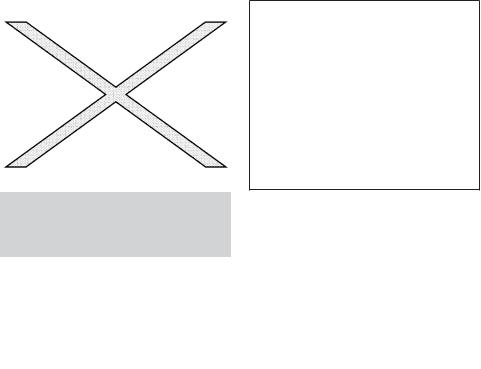
WHEN READING THE MANUAL
This manual includes information for all features and equipment available on this model. Features and equipment in your vehicle may vary depending on model, trim level, options selected, order, date of production, region or availability. Therefore, you may find information about features or equipment that are not included or installed on your vehicle.
All information, specifications and illustrations in this manual are those in effect at the time of printing. NISSAN reserves the right to change specifications, performance, design or component suppliers without notice and without obligation. From time to time, NISSAN may update or revise this manual to provide Owners with the most accurate information currently available. Please carefully read and retain with this manual all revision updates sent to you by NISSAN to ensure you have access to accurate and up-to-date information regarding your vehicle. Current versions of vehicle Owner’s Manuals and any updates can also be found in the Owner section of the NISSAN website at https://owners.nissanusa.com/nowners/ navigation/manualsGuide. If you have questions concerning any information in your Owner’s Manual, contact NISSAN Consumer Affairs. See the NISSAN CUSTOMER CARE PROGRAM page in this Owner’s Manual for contact information.
IMPORTANT INFORMATION ABOUT THIS MANUAL
You will see various symbols in this manual. They are used in the following ways:
WARNING
This is used to indicate the presence of a hazard that could cause death or serious personal injury. To avoid or reduce the risk, the procedures must be followed precisely.
CAUTION
This is used to indicate the presence of a hazard that could cause minor or moderate personal injury or damage to your vehicle. To avoid or reduce the risk, the procedures must be followed carefully.
APD1005
If you see this symbol, it means “Do not do this” or “Do not let this happen.”
If you see a symbol similar to these in an illustration, it means the arrow points to the front of the vehicle.
Arrows in an illustration that are similar to these indicate movement or action.
Arrows in an illustration that are similar to these call attention to an item in the illustration.

CALIFORNIA PROPOSITION 65 WARNING
WARNING
Engine exhaust, some of its constituents, and certain vehicle components contain or emit chemicals known to the State of California to cause cancer and birth defects or other reproductive harm. In addition, certain fluids contained in vehicles and certain products of component wear contain or emit chemicals known to the State of California to cause cancer and birth defects or other reproductive harm.
CALIFORNIA PERCHLORATE ADVISORY
Some vehicle parts, such as lithium batteries, may contain perchlorate material. The following advisory is provided: “Perchlorate Material – special handling may apply, See www.dtsc.ca.gov/hazardouswaste/perchlorate/”.
BLUETOOTH® is a trademark owned by Bluetooth SIG, Inc. and licensed to Visteon and Bosch.
SiriusXM® Satellite Radio requires subscription, sold separately. Not available in Alaska, Hawaii or Guam. For more information, visit www.siriusxm.com.
© 2013 NISSAN NORTH AMERICA, INC.
All rights reserved. No part of this Owner’s Manual may be reproduced or stored in a retrieval system, or transmitted in any form, or by any means, electronic, mechanical, photocopying, recording or otherwise, without the prior written permission of Nissan North America, Inc.
NISSAN CUSTOMER CARE PROGRAM
NISSAN CARES . . .
Both NISSAN and your NISSAN dealer are dedicated to serving all your automotive needs. Your satisfaction with your vehicle and your NISSAN dealer are our primary concerns. Your NISSAN dealer is always available to assist you with all your automobile sales and service needs.
However, if there is something that your NISSAN dealer cannot assist you with or you would like to provide NISSAN directly with comments or questions, please contact the NISSAN Consumer Affairs Department using our toll-free number:
For U.S. customers 877–NIS-NCV1 (877-647-6281)
For Canadian customers 1-800-387-0122
The Consumer Affairs Department will ask for the following information:
–Your name, address, and telephone number
–Vehicle identification number (attached to the top of the instrument panel on the driver’s side)
–Date of purchase
–Current odometer reading
–Your NISSAN dealer’s name
–Your comments or questions
OR
You can write to NISSAN with the information at:
For U.S. customers
Nissan North America, Inc. Consumer Affairs Department P.O. Box 685003
Franklin, TN 37068-5003 or via e-mail at:
nnaconsumeraffairs@nissan-usa.com
For Canadian customers Nissan Canada Inc. 5290 Orbitor Drive
Mississauga, Ontario L4W 4Z5 or via e-mail at:
information.centre@nissancanada.com
If you prefer, visit us at: www.nissanusa.com (for U.S. customers) or www.nissan.ca (for Canadian customers)
We appreciate your interest in NISSAN and thank you for buying a quality NISSAN vehicle.

Table of
Contents
Illustrated table of contents |
|
0 |
|
|
|
|
|
|
Safety—Seats, seat belts and supplemental restraint system |
|
1 |
|
|
|
|
2 |
|
Instruments and controls |
|
|
|
|
|
|
|
|
Pre-driving checks and adjustments |
|
3 |
|
|
|
|
|
|
Monitor, climate, audio, phone and voice recognition systems |
|
4 |
|
|
|
|
|
|
Starting and driving |
|
5 |
|
|
|
|
|
|
In case of emergency |
|
6 |
|
|
|
|
|
|
Appearance and care |
|
7 |
|
|
|
|
|
|
Maintenance and do-it-yourself |
|
8 |
|
|
|
|
|
|
Technical and consumer information |
|
9 |
|
|
|
Index |
|
10 |

0 Illustrated table of contents
Air bags, seat belts and child restraints . . . . . . . . . . . . . . 0-2 Exterior front . . . . . . . . . . . . . . . . . . . . . . . . . . . . . . . . . . . . . . 0-3 Exterior rear. . . . . . . . . . . . . . . . . . . . . . . . . . . . . . . . . . . . . . . 0-4 Passenger compartment . . . . . . . . . . . . . . . . . . . . . . . . . . . 0-5
Instrument panel. . . . . . . . . . . . . . . . . . . . . . . . . . . . . . . . . . . 0-6 Engine compartment check locations . . . . . . . . . . . . . . . . 0-7 Warning/indicator lights . . . . . . . . . . . . . . . . . . . . . . . . . . . . 0-8

AIR BAGS, SEAT BELTS AND CHILD
RESTRAINTS
1. Seat belts (P. 1-44)
2. Roof-mounted curtain side-impact and rollover supplemental air bag (P. 1-30)
3. Head restraints/headrests (P. 1-4)
4. Supplemental front-impact air bags (P. 1-30)
5. Seats (P. 1-2)
6. Occupant classification sensor (weight sensor) (P. 1-30)
7. Seat belt with pretensioners (P. 1-44)
8. Front seat-mounted side-impact supplemental air bag (P. 1-30)
9. Front seat-mounted side-impact supplemental air bag modules (P. 1-30)
10. Rear seat top tether strap anchor (located on bottom of seatback) (P. 1-21)
See the page number indicated in parentheses for operating details.
LII2141
0-2 Illustrated table of contents

EXTERIOR FRONT
1. Engine hood (P. 3-14)
2. Windshield wiper and washer switch (P. 2-18)
3. Windshield (P. 8-17)
4. Power windows (P. 2-26)
5. Door locks, keys (P. 3-3, 3-2) 6. Mirrors (P. 3-17)
7. Tire pressure (P. 9-10)
8. Flat tire (P. 6-2)
9. Tire chains (P. 8-37)
10. Replacing bulbs (P. 8-24)
11. Headlight and turn signal switch (P. 2-19)
See the page number indicated in parentheses for operating details.
LII2060
Illustrated table of contents 0-3

EXTERIOR REAR
1. Back doors (P. 3-8)
2. RearView Monitor (if so equipped) (p. 4-9)
3 Replacing bulbs (P. 8-24)
4. Vehicle loading (P. 9-12)
See the page number indicated in parentheses for operating details.
LII2061
0-4 Illustrated table of contents

PASSENGER COMPARTMENT
1. Map lights (P. 2-29)
2. Sun visors (P. 3-17)
3. Inside mirror (P.3-17)
4. Steering wheel switches for audio control (P. 4-54)
5. Glove box (P. 2-25)
6. Storage trays (P. 2-24)
7. Front seats (P. 1-2)
8. Fuel-filler cap, fuel recommendation (P. 3-15, P. 9-3)
9. Storage (P. 2-24)
See the page number indicated in parentheses for operating details.
LII2059
Illustrated table of contents 0-5

INSTRUMENT PANEL
|
|
|
LIC2714 |
1. |
Vents (P. 4-14) |
5. |
Cruise control switches |
2. |
Headlight/turn signal switch (P. 2-19) |
|
(if so equipped) (P.5-14) |
3. |
Driver’s supplemental air bag /horn |
6. |
Windshield wiper/washer switch |
|
(P. 1-30, 2-22) |
|
(P. 2-18) |
4.Meters and gauges (P. 2-3)
7.Rear window and outside mirror (if so equipped) defroster switch (P. 2-19)
8.Audio system (P. 4-23)
9.Passenger’s supplemental air bag (P. 1-30)
10.Glove box (P. 2-25)
11.Climate controls (P. 4-15)
12.Front passenger air bag status light (P. 2-13)
13.Cup holders (P. 2-25)
14.Shift lever (P. 5-11)
15.Hazard warning flasher switch (P. 6-2)
16.Ignition switch (P. 5-7)
17.Audio control switches (if so equipped) (P.4-54)
18.Fuel-filler lid release lever (P. 3-15)/ Hood release lever (P. 3-14)
19.Fuse box (P. 8-19)
20.Vehicle Dynamic Control (VDC) off switch (P. 2-22)/Electronic outside rearview mirror control switch
(if so equipped) (P.3-18)
See the page number indicated in parentheses for operating details.
0-6 Illustrated table of contents

ENGINE COMPARTMENT CHECK
LOCATIONS
MR20DE engine
1. Engine coolant reservoir (P. 8-7)
2. Engine oil filler cap (P. 8-10)
3. Brake fluid reservoir (P. 8-12)
4. Air cleaner (P. 8-16)
5. Fuse and relay box (P. 8-19)
6. Battery (P. 8-13)
7. Radiator cap (P. 8-7)
8. Engine oil dipstick (P. 8-9)
9. Drive belt location (P. 8-15)
10. Windshield-washer fluid reservoir (P. 8-12)
LDI2279
Illustrated table of contents 0-7
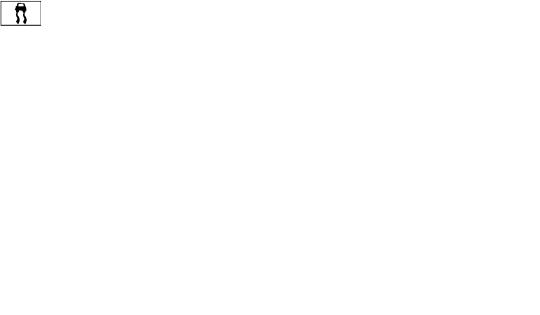
WARNING/INDICATOR LIGHTS
Warning |
Name |
Page |
light |
|
|
|
|
|
|
Anti-lock Braking |
2-9 |
|
System (ABS) warn- |
|
or |
ing light |
|
|
|
|
|
Brake warning light |
2-9 |
or |
|
|
|
|
|
|
Charge warning |
2-10 |
|
light |
|
|
|
|
|
Door open warning |
2-10 |
|
light |
|
|
|
|
|
Engine oil pressure |
2-10 |
|
warning light |
|
|
|
|
|
High temperature |
2-10 |
|
warning light (red) |
|
|
|
|
Warning |
Name |
Page |
light |
|
|
|
|
|
|
Low fuel warning |
2-10 |
|
light |
|
|
|
|
|
Low tire pressure |
2-10 |
|
warning light |
|
|
|
|
|
Low windshield- |
2-12 |
|
washer fluid warning |
|
|
light |
|
|
|
|
|
Power steering |
2-12 |
|
warning light |
|
|
|
|
|
Seat belt warning |
2-12 |
|
light and chime |
|
|
|
|
|
Supplemental air |
2-13 |
|
bag warning light |
|
|
|
|
Indicator |
Name |
Page |
light |
|
|
|
|
|
|
Continuously Vari- |
2-13 |
|
able Transmission |
|
|
(CVT) position indi- |
|
|
cator light |
|
|
|
|
|
Cruise main switch |
2-13 |
|
indicator light (if so |
|
|
equipped) |
|
|
|
|
|
Front passenger air |
2-13 |
|
bag status light |
|
|
|
|
|
High beam indicator |
2-13 |
|
light (blue) |
|
|
|
|
|
Malfunction Indicator |
2-13 |
|
Light (MIL) |
|
|
|
|
|
Security indicator |
2-14 |
|
light |
|
|
|
|
|
Slip indicator light |
2-14 |
|
|
|
0-8 Illustrated table of contents

Indicator |
Name |
Page |
light |
|
|
|
|
|
|
Turn signal/hazard |
2-15 |
|
indicator lights |
|
|
|
|
|
Vehicle Dynamic |
2-15 |
|
Control (VDC) off |
|
|
indicator light |
|
|
|
|
Illustrated table of contents 0-9
MEMO
0-10 Illustrated table of contents

1 Safety—Seats, seat belts and supplemental restraint system
Seats . . . . . . . . . . . . . . . . . . . . . . . . . . . . . . . . . . . . . . . . . . . . 1-2 Front manual seat adjustment . . . . . . . . . . . . . . . . . . . . 1-2 Head restraints/Headrests. . . . . . . . . . . . . . . . . . . . . . . 1-4 Flexible seating. . . . . . . . . . . . . . . . . . . . . . . . . . . . . . . . . 1-8 Seat belts . . . . . . . . . . . . . . . . . . . . . . . . . . . . . . . . . . . . . . .1-11 Precautions on seat belt usage. . . . . . . . . . . . . . . . . .1-11 Pregnant women . . . . . . . . . . . . . . . . . . . . . . . . . . . . . .1-14 Injured persons. . . . . . . . . . . . . . . . . . . . . . . . . . . . . . . .1-14 Three-point type seat belt with retractor. . . . . . . . . .1-14 Seat belt extenders . . . . . . . . . . . . . . . . . . . . . . . . . . . .1-17 Seat belt maintenance . . . . . . . . . . . . . . . . . . . . . . . . .1-17 Child safety. . . . . . . . . . . . . . . . . . . . . . . . . . . . . . . . . . . . . .1-18 Infants. . . . . . . . . . . . . . . . . . . . . . . . . . . . . . . . . . . . . . . .1-18 Small children. . . . . . . . . . . . . . . . . . . . . . . . . . . . . . . . .1-19 Larger children . . . . . . . . . . . . . . . . . . . . . . . . . . . . . . . .1-19
Child restraints. . . . . . . . . . . . . . . . . . . . . . . . . . . . . . . . . . .1-19 Precautions on child restraints . . . . . . . . . . . . . . . . . .1-19 Top tether anchor. . . . . . . . . . . . . . . . . . . . . . . . . . . . . .1-21 Rear-facing child restraint installation using
the seat belts . . . . . . . . . . . . . . . . . . . . . . . . . . . . . . . . .1-22 Forward-facing child restraint installation
using the seat belts . . . . . . . . . . . . . . . . . . . . . . . . . . . .1-22 Installing top tether strap
(front passenger seat). . . . . . . . . . . . . . . . . . . . . . . . . .1-26 Booster seats . . . . . . . . . . . . . . . . . . . . . . . . . . . . . . . . .1-26 Supplemental restraint system . . . . . . . . . . . . . . . . . . . . .1-30
Precautions on supplemental restraint
system . . . . . . . . . . . . . . . . . . . . . . . . . . . . . . . . . . . . . . .1-30 Supplemental air bag warning labels. . . . . . . . . . . . .1-45 Supplemental air bag warning light . . . . . . . . . . . . . .1-45
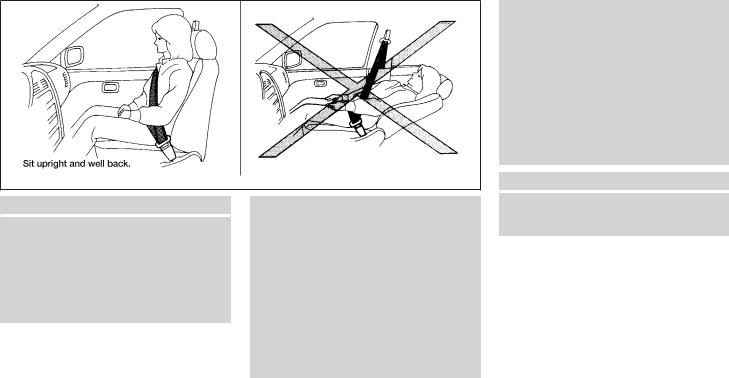
SEATS
ARS1152
WARNING
●Do not ride in a moving vehicle when the seatback is reclined. This can be dangerous. The shoulder belt will not be against your body. In an accident, you could be thrown into it and receive neck or other serious injuries. You could also slide under the lap belt and receive serious internal injuries.
●For the most effective protection when the vehicle is in motion, the seat should be upright. Always sit well back in the seat with both feet on the floor and adjust the seat properly. See “Precautions on seat belt usage”in this section.
●After adjustment, gently rock in the seat to make sure it is securely locked.
●Do not leave children unattended inside the vehicle. They could unknowingly activate switches or controls. Unattended children could become involved in serious accidents.
●Do not adjust the driver’s seat while driving so full attention may be given to vehicle operation. The seat may move suddenly and could cause loss of control of the vehicle.
●The seatback should not be reclined any more than needed for comfort. Seat belts are most effective when the passenger sits well back and straight up in the seat. If the seatback is reclined, the risk of sliding under the lap belt and being injured is increased.
CAUTION
When adjusting the seat positions, be sure not to contact any moving parts to avoid possible injuries and/or damage.
FRONT MANUAL SEAT
ADJUSTMENT
1-2 Safety—Seats, seat belts and supplemental restraint system

LRS2208
Forward and backward
Pull the center of the bar up and hold it while you slide the seat forward or backward to the desired position. Release the bar to lock the seat in position.
LRS2220
Reclining
To recline the seatback, pull the lever up and lean back. To bring the seatback forward, pull the lever up and lean your body forward. Release the lever to lock the seatback in position.
The reclining feature allows adjustment of the seatback for occupants of different sizes for added comfort and to help obtain proper seat belt fit. See “Precautions on seat belt usage” in this section. Also, the seatback can be reclined to allow occupants to rest when the vehicle is stopped and the shift lever is in the P (Park) position.
LRS2221
Seat lifter (driver’s seat)
Pull up or push down the adjusting lever to adjust the seat height until the desired position is achieved.
Safety—Seats, seat belts and supplemental restraint system 1-3
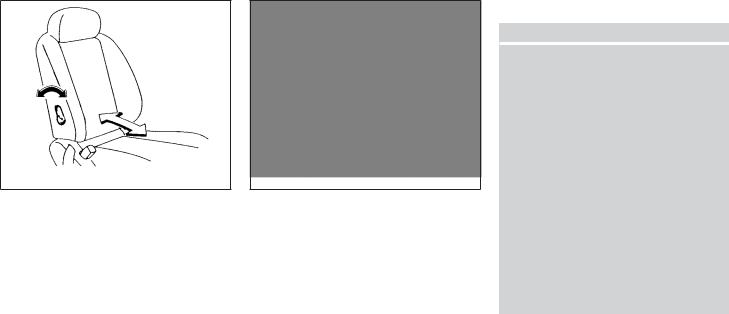
WRS0389
Lumbar support (driver’s seat)
The lumbar support feature provides adjustable lower back support to the driver. Move the lever forward or backward to adjust the seat lumbar area.
LRS2339
Armrest (driver’s side only)
To use the armrest, pull it down to the resting position.
A Stowed position
B Resting position
HEAD RESTRAINTS/HEADRESTS
WARNING
Head restraints/headrests supplement the other vehicle safety systems. They may provide additional protection against injury in certain rear end collisions. Adjustable head restraints/headrests must be adjusted properly, as specified in this section. Check the adjustment after someone else uses the seat. Do not attach anything to the head restraint/headrest stalks or remove the head restraint/headrest. Do not use the seat if the head restraint/headrest has been removed. If the head restraint/headrest was removed, reinstall and properly adjust the head restraint/headrest before an occupant uses the seating position. Failure to follow these instructions can reduce the effectiveness of the head restraints/headrests. This may increase the risk of serious injury or death in a collision.
1-4 Safety—Seats, seat belts and supplemental restraint system

LRS2434
The illustration shows the seating positions equipped with head restraints/headrests.
Indicates the seating position is equipped with a head restraint.
Indicates the seating position is equipped with a headrest.
+ Indicates the seating position is not equipped with a head restraint or headrest (if applicable).
●Your vehicle is equipped with a head restraint/headrest that may be integrated, adjustable or non-adjustable.
●Adjustable head restraints/headrests have multiple notches along the stalks to lock them in a desired adjustment position.
●The non-adjustable head restraints/headrests have a single locking notch to secure them to the seat frame.
●Proper Adjustment:
–For the adjustable type, align the head restraint/headrest so the center of your ear is approximately level with the center of the head restraint/headrest.
–If your ear position is still higher than the recommended alignment, place the head restraint/headrest at the highest position.
●If the head restraint/headrest has been removed, ensure that it is reinstalled and locked in place before riding in that designated seating position.
LRS2300
Adjustable head restraint/headrest components
1.Removable head restraint/headrest
2.Multiple notches
3.Lock knob
4.Stalks
Safety—Seats, seat belts and supplemental restraint system 1-5
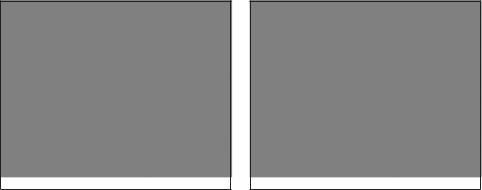
LRS2299
Non-adjustable head restraint/ headrest components
1.Removable head restraint/headrest
2.Single Notch
3.Lock knob
4.Stalks
LRS2302
Remove
Use the following procedure to remove the head restraint/headrest.
1.Pull the head restraint/headrest up to the highest position.
2.Push and hold the lock knob.
3.Remove the head restraint/headrest from the seat.
4.Store the head restraint/headrest properly in a secure place so it is not loose in the vehicle.
5.Reinstall and properly adjust the head restraint/headrest before an occupant uses the seating position.
1-6 Safety—Seats, seat belts and supplemental restraint system

LRS2303
Install
1.Align the head restraint/headrest stalks with the holes in the seat. Make sure the head restraint/headrest is facing the correct di-
rection. The stalk with the notch (notches)1 must be installed in the hole with the lock knob 2 .
2.Push and hold the lock knob and push the head restraint/headrest down.
3.Properly adjust the head restraint/headrest before an occupant uses the seating position.
WRS0134
Adjust
For adjustable head restraint/headrest
Adjust the head restraint/headrest so the center is level with the center of your ears. If your ear position is still higher than the recommended alignment, place the head restraint/headrest at the highest position.
LRS2351
For non-adjustable head restraint/ headrest
Make sure the head restraint/headrest is positioned so the lock knob is engaged in the notch before riding in that designated seating position.
Safety—Seats, seat belts and supplemental restraint system 1-7
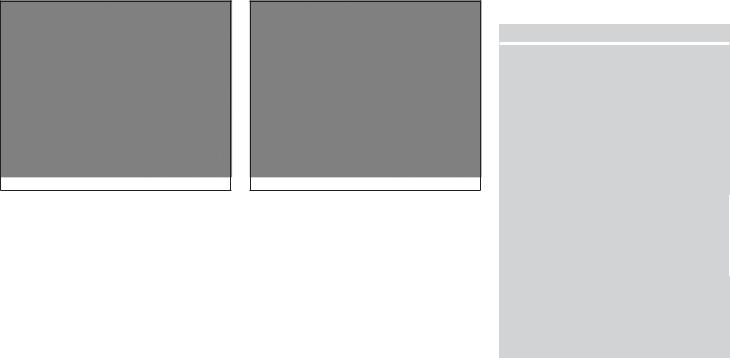
LRS2305
Raise
To raise the head restraint/headrest, pull it up.
Make sure the head restraint/headrest is positioned so the lock knob is engaged in the notch before riding in that designated seating position.
LRS2306
Lower
To lower, push and hold the lock knob and push the head restraint/headrest down.
Make sure the head restraint/headrest is positioned so the lock knob is engaged in the notch before riding in that designated seating position.
FLEXIBLE SEATING
WARNING
●Do not allow people to ride in any area of your vehicle that is not equipped with seats and seat belts. Be sure everyone in your vehicle is in a seat and using a seat belt properly.
●Never allow anyone to ride in the cargo area or on the rear seats when they are in the fold-down position. In a collision, people riding in these areas without proper restraints are more likely to be seriously injured or killed.
●Head restraints/headrests should be adjusted properly as they may provide significant protection against injury in an accident. Always replace and adjust them properly if they have been removed for any reason.
●If the head restraints/headrests are removed for any reason, they should be securely stored to prevent them from causing injury to passengers or damage to the vehicle in case of sudden braking or an accident.
1-8 Safety—Seats, seat belts and supplemental restraint system

●When returning the seatbacks to the upright position, be certain they are completely secured in the latched position. If they are not completely secured, passengers may be injured in an accident or sudden stop.
●Properly secure all cargo to help prevent it from sliding or shifting. Do not place cargo higher than the seatbacks. In a sudden stop or collision, unsecured cargo could cause personal injury.
LRS2336
Folding the front passenger’s seatback
To fold the front passenger’s seatback flat for extra storage:
1.Slide the seat to the rearmost position. Lift up on the recline lever 1 , located on the outside edge of the seat, and fold the seat-
back forward as far as it will go. Then lift up on the latch 2 located on the inside of the seatback to release the back of the seat.
LRS2345
NOTE:
When the seat is folded forward the belt buckle must be in the forward position to prevent excessive wear.
2.Once the seatback is released, it will enable you to fold the front passenger seatback 3 flat over the seat cushion.
Safety—Seats, seat belts and supplemental restraint system 1-9
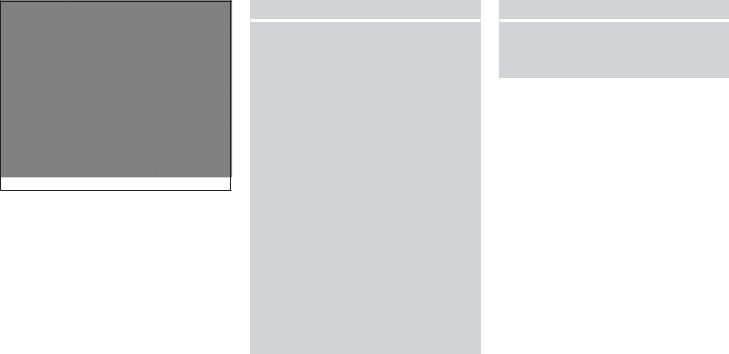
LRS2338
3.To return the front passenger’s seat to a seating position, lift up on the seatback and
push it up to an upright position. Then pull up on the recline lever 1 and lean the seatback to a proper seating position. Release the lever to lock the seatback in position.
WARNING
●If you fold the front passenger’s seatback flat forward to carry objects, be sure this cargo is properly secured and not near an air bag. In a crash, an inflating air bag might force that object toward a person. This could cause severe injury or even death. Secure objects away from the area in which an air bag would inflate. See “Precautions on supplemental restraint system” in this section.
●Never allow anyone to ride in the cargo area or on the front passenger’s seat when it is in the fold-down position. Use of these areas by passengers could result in serious injury in an accident or sudden stop.
●Properly secure all cargo to help prevent it from sliding or shifting. Do not place cargo higher than the seatbacks. In a sudden stop or collision, unsecured cargo could cause personal injury (even if the vehicle is equipped with a partition dividing the seating area and the cargo area).
CAUTION
Do not place objects on the seatback unless it is folded completely horizontal. If seatback is in any other position it could cause damage.
1-10 Safety—Seats, seat belts and supplemental restraint system
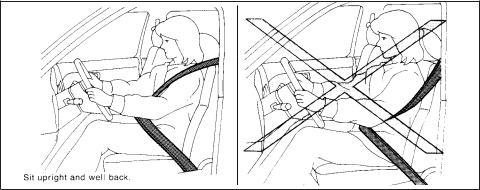
SEAT BELTS
SSS0136
PRECAUTIONS ON SEAT BELT
USAGE
If you are wearing your seat belt properly adjusted and you are sitting upright and well back in your seat with both feet on the floor, your chances of being injured or killed in an accident and/or the severity of injury may be greatly reduced. NISSAN strongly encourages you and all of your passengers to buckle up every time you drive, even if your seating position includes a supplemental air bag.
Most U.S. states and Canadian provinces or territories specify that seat belts be worn at all times when a vehicle is being driven.
Safety—Seats, seat belts and supplemental restraint system 1-11
